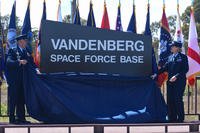MARINE CORPS AIR STATION NEW RIVER, N.C. — Marines from Marine Light Attack Helicopter Squadron 269 gained proficiency in the new UH-1Y “Venom” Hueys by practicing flying and landing in confined areas aboard Marine Corps Base Camp Lejeune, Aug. 9.
The UH-1Y is the newest model of the Huey, and is commonly referred to as the ‘Yankee’ for the letter ‘Y’ in its designation. It is an upgrade from the older UH-1N ‘November’ version and features many new components.
According to Bell Helicopter, the manufacturer of the Huey, the UH-1Y has almost 50 percent more range and maximum cruise speed than the UH-1N. The Yankee is equipped with a modified four-blade, all-composite rotor and has upgraded engines and transmissions to give it increased payload and performance capabilities.
“The Yankee has a lot more power,” said Lance Cpl. Michael J. Costa, HMLA-269 crew chief. “The added power the Yankee has compared to the November allows us to lift more weight and gear.”
To gain experience with the latest model, HMLA-269 used two of their new UH-1Y Hueys to help the pilots and crew of HMLA-269 maintain their proficiency and learn new tactics from the transition training unit instructors.
The two UH-1Ys practiced landing in difficult landing zones where the terrain and obstacles would challenge both the crew and pilots as well as make them more comfortable with the newest variant of the Huey.
“The pilots of the Hueys took turns flying into the landing zone and taking off almost immediately after landing, ensuring that both pilots received the best and most amount of training possible,” said Costa.
The Marines returned to Marine Corps Air Station New River to refuel and then performed the same flight and procedures, but during the dark of night.
Since around May, the Marines of HMLA-269 began training and transitioning to the UH-1Y, said Lance Cpl. Barry C. Clem, HMLA-269 crew chief.
“The West Coast trained with and transitioned to the UH-1Y first,” said Maj. Andrew J. Erickson, Marine Aircraft Group 29 transition training unit instructor. “It takes about 10 months to completely transition a squadron to the Yankee, but now that we have done it so much we have it down to a science.”
“It feels like the transition is going smoother than some of the other HMLA squadrons due to the overall preparedness of the squadron,” said Clem.























